Kelly Jensen's Blog, page 132
October 9, 2013
Guest Post: Swati Avasthi on Friendship in YA
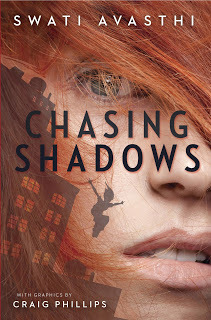

Earlier this week, I posted my review of Swati Avasthi's Chasing Shadows and today she's here with a really fantastic post about friendship in adolescence and in YA lit.
In YA there’s an illusion – that
the relationships formed in the books we read are endless. That high
school romances and friendships survive the transition to college, to
the working world, to whatever paths the characters take after high
school is over.
I am a self-proclaimed, unabashed geek.
I love sentence structure, can get passionate about the
ill-semi-colon and swear that CMS is the One Format to Rule them All.
In high school, I wouldn’t have claimed my identity so fearlessly
– I didn’t know who I was; I was a bit of a floater (I lettered 5
times and was the editor of the literary magazine – I couldn’t be
placed neatly into a box). But I never skipped classes, rarely
turned in late work, put my hand up and participated – the works.
One day, during a free period, a friend
broke down and told me that she’d been raped. As she was crying I
skipped my next class – a suspendable offense in my school -- and
we talked all through it until she felt better for that day. When I
ran into the teacher whose class I’d skipped, I made no excuses. I
was unapologetic, remorseless but honest – a friend needed my help
and yes, I’d do it again if I needed to. He wanted details. But I
wouldn’t cave because I knew one thing about myself: I was a good
friend.
In a time of life when I had no idea
who I was as a person, who I wanted to be growing up, and who I was
as a girlfriend, I knew that one truth. I came of age as a friend.
More than boyfriends, more than atheletics, more than even writing,
the thing I was sure of was my friendships.
Friendship stories (as compared to
romances) are underdone in YA. I don’t feel like I need a whole lot
of evidence to prove that – there’s a whole section for
paranormal romance in Barnes and Noble and nothing equivalent for
friendships. And often when friendships are portrayed in YA, they
are portrayed like I had thought of them as a teen – endless,
important, fixed. I was loyal to a fault.
But friendships are much more
complicated than that, especially when you are young, especially when
you are in transition, which most teens are. Only one of my friends
from high school (and not the one I skipped class for) is still my
friend. College changes everything. It changes who you are and
sometimes, your friends change too and sometimes they don’t.
Sometimes, they get left behind.
CHASING SHADOWS, my second novel, is
about three friends who are inseparable. Fast, strong, freerunners,
Corey, Holly and Savitri are one unit. When Corey is shot and
killed, Holly and Savitri have to remake themselves in the shadow of
a gunman, and in so doing, their friendship starts to fracture.
Holly wants to go after the killer and Savitri, who had wanted to go
away for college, no longer knows how to save Holly as she comes
unglued. How far do you go for your friends? At what point is being
a good friend about walking away?
It is a novel about how, when we change
because of something we can lose the people we are and the friends we
have.
My best friend from high school is
still a very close friend of mine. But it didn’t happen easily.
And there were times when I thought our friendship wouldn’t make
the transitions it needed to as we went to college, got married, and
had our own children. To keep a friendship, we have to let go of
some of it – to let it change as we do, to let it evolve, and wax
and wane sometimes.
Jane Resh Thomas says that lying to
children is a sin. My job is to tell the truth as I understand it
and the truth for me about friendships is that sometimes they don’t
survive. And when they do, it is through letting them grow and
change. It is not without struggles in which we define who we are as
friends: what actions and beliefs we value most in ourselves and
others. It’s not without conflict and drama, because this is about
coming of age and self discovery, which can have casualties. In
other words, it is the stuff of fiction. History is written by the
victors; fiction is written by those who struggle.
***
Swati Avasthi is the author of two YA novels: CHASING SHADOWS which is a Junior library guild selection, and received starred reviews from Publisher’s Weekly and Kirkus, and SPLIT which received the International Reading Association Award, Cybils Award, a silver Parent’s Choice award and made numerous “best of lists” including YALSA, CCBC and Bank Street.
Swati got her MFA from University of Minnesota and teaches at Hamline University and lives in Minneapolis with her two dogs, two kids and one husband, though he is worth two.







 Related StoriesGuest Post: Why The Chocolate War Matters by Angie ManfrediNothing Can Possibly Go Wrong -- Faith Erin Hicks on the collaborative effortGuest Post: Victoria Schwab on The Archived
Related StoriesGuest Post: Why The Chocolate War Matters by Angie ManfrediNothing Can Possibly Go Wrong -- Faith Erin Hicks on the collaborative effortGuest Post: Victoria Schwab on The Archived
Published on October 09, 2013 22:00
PLA Conference Excitement

I'm really thrilled to announce that this year at the Public Library Association Conference, I'll be presenting on two topics.
First, I'll be presenting with Katie Salo, Angie Manfredi, and Andrea Sowers on the topic of teen programming. This will be a standard program session, but attendees will walk away not only with ideas to try for teen programming in the library (including on passive programming), but I think between the four of us, you'll get a sense that not everything will be successful and that is okay.
Today I got news that my ConverStation -- a fancy word for a Conversation Starter -- with Sophie Brookover was accepted, as well. We'll be talking about "new adult" fiction. It will not be a rehash of our ALA conversation, though some topics will lend themselves to discussion. Part of this is because "new adult" is a rapidly changing topic and we've been thinking and talking about this for months now. The other reason is that Sophie and I, along with Liz Burns, have authored an article to be published early next year in The Horn Book Magazine on the topic, and while working through the topic in print, we've had some real "ah ha" moments.
I'm excited to not only be able to have both of these opportunities, but because PLA is a much smaller, more focused conference than ALA is, I'm eager for really valuable discussion both about these topics and others. There's also something really satisfying in being able to present with some of your core professional colleagues on topics you talk about privately on a regular basis. It's never about the being on stage and presenting -- it's about the discussions that come after with other people who give you a lot more food for thought.







 Related StoriesALA 2013 Chicago: A RecapSome exciting newsYALSA's YA Lit Symposium Presentation
Related StoriesALA 2013 Chicago: A RecapSome exciting newsYALSA's YA Lit Symposium Presentation
Published on October 09, 2013 16:54
October 8, 2013
The Burning Sky by Sherry Thomas
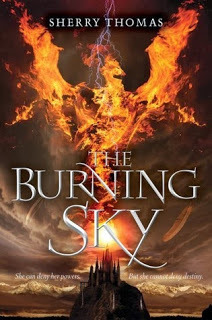
I went to the Austin Teen Book Festival several days ago, and Sherry Thomas was one author in attendance. She described her book, The Burning Sky , as "Harry Potter with cross-dressing," which is certainly pithy, but may actually set up many readers for disappointment.
Nothing is Harry Potter. And that is OK.
The Burning Sky is actually quite different. Yes, there is a boarding school, but the whole story is set in 1883, immediately setting a very different tone. (Historical fantasy! I love historical fantasy!) The boarding school (Eton) is also set in the non-magical world, and our protagonist Iolanthe has to pretend to be non-magical herself (as well as a boy) in order to not give herself away. She's an elemental mage, you see, and she's been coerced by Titus, the prince of the Domain - also a magical teen pretending to be a normal, though royal, person in the non-magical boarding school - into training with him at Eton, honing her powers, in order to one day bring down the Bane, a powerful, possibly immortal being who rules Atlantis, which in turn subjugates Titus and Iolanthe's homeland.
It's a classic fantasy storyline, but told very well. What I found particularly engaging was the world-building, which is quite creative and left me with a feeling that I really knew the place when I finished the book. Like in Harry Potter, the magical world exists alongside the non-magical one, unbeknownst to non-magical people. That's pretty much where the similarities end.
In Iolanthe's world, there's an Inquisitor who works for the Bane, able to worm her way inside someone's brain, not precisely reading memories, but getting what she needs nonetheless. There's also a diary full of visions that only shows certain pages depending upon what the reader needs to know. The spells are interesting - there's one that Titus casts which makes it impossible for Iolanthe's image to be reproduced in any way, as well as one called an "otherwise" spell that makes it seem like a person named Archer Fairfax had been attending Eton for several months before Iolanthe arrived, when in fact no such person even existed up until that point. My favorite bit, though, is the Crucible: a book that training mages can go inside in order to train with copies of past rulers and great mages, learning how to fight dragons without any danger to their actual selves...most of the time.
I love reading about cool things like this. It reminds me of the possibilities of fantasy. Creativity needn't be earth-shaking. Even small-ish details like these lend the book uniqueness amidst its often-trodden storyline.
Over the course of the story, Iolanthe and Titus do fall in love. It's rather slow-burning, which is nice. There's deserved and long-lasting bitterness from Iolanthe toward Titus. Titus is wonderfully tortured, and Thomas never makes it seem melodramatic. Her career as a romance author is in evidence - she's very good at it.
I wish I knew more about what exactly Atlantis is. (I was fascinated by the legends of Atlantis as a teenager and am eager to see if Thomas just liked the name or if there is some connection.) We never learn how Atlantis came to power, what it is exactly they do to the citizens they control, or anything about the Bane other than he's possibly immortal. There's also a bit near the end that I hoped was more than a plot convenience, but turned out to be just that. It was lazy writing and seemed out of place with the quality of the rest of the book.
All in all, this is very well-done high fantasy and should please fans of the subgenre. It fits very neatly into the list of books we covered in our high fantasy genre profile - magic, mages, new lands, strange creatures, a fight against evil. I'm eager for the sequels, and I hope to see more like it in the future.
Review copy received from the publisher. The Burning Sky is available now.







 Related StoriesChasing Shadows by Swati AvasthiDual Review: Engines of the Broken World by Jason VanheeFriday Never Leaving by Vikki Wakefield
Related StoriesChasing Shadows by Swati AvasthiDual Review: Engines of the Broken World by Jason VanheeFriday Never Leaving by Vikki Wakefield
Published on October 08, 2013 22:00
October 7, 2013
Horror Reboots: A Look at New, Revived, and Repackaged Scary Books
Since October is horror month and we like to get at least a post a week up featuring something horror-related, I wanted to share a few horror-related things I've read about lately that didn't make it into the wrap-up of my SLJ piece but that I think would be of interest.
Did you know that Scholastic used to have a horror imprint called Point Horror? It started out back in 1991 and it was where some of the better-known scary books for teens were published back in the day, including books by R. L. Stine, Caroline B. Cooney, and Christophe Pike. When the books were doing well, they were doing well -- Pike and Stine in particular published a ton of books through Point Horror. I'm pretty sure I read a boat load of them when I was a teen, which makes sense since the imprint itself was aimed at teen girls like me.
The imprint died out between 2004 and 2005.
But Scholastic is rebooting their Point Horror series. To me it seems like it's aimed at exactly the same readership it was back in the 90s and early 00s, and there are three new titles out or coming out shortly to put on your radar. All of them are paperback originals and deal in some capacity with "the internet world."
All descriptions come from WorldCat.
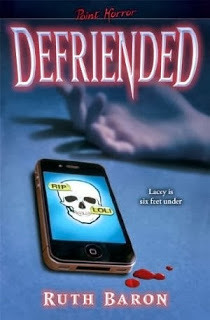
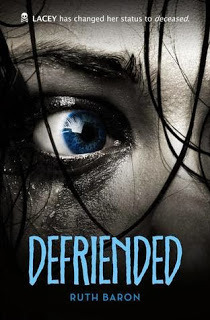
Defriended by Ruth Baron: A friend request from beyond the grave ... Jason has met the perfect girl. OK, so maybe he hasn't actually MET Lacey yet, but they talk online all the time. Yet despite spending most nights chatting, Lacey refuses to meet up in person. Suspicious, Jason starts googling, and his cyberstalking leads to a shocking discovery: According to multiple newspapers, Lacey died a year earlier. Soon, Jason finds himself enmeshed in a disturbing mystery. Has he found a way to iChat with the dead? Or is someone playing a dangerous trick? Either way, Jason has to discover the truth before it's too late. You can't put up away messages from beyond the grave.
I have seen both covers as being available, but I think the one on the right is the actual cover, since it fits the style of the others in this relaunch. I don't know about anyone else, but the one on the left is really speaking to me -- it's perfectly teen scream. But I also really love the tag line for the cover on the right. Defriended is available now.
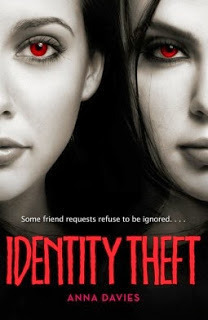
Identity Theft by Anna Davies: Someone claiming to be Hayley posts incriminating photographs of her online, jeopardizing her chance at a college scholarship, but when the photographs reveal dark secrets in her family's past, Hayley learns her very life is at stake.
The red eyes are creepy, and even though it's a pretty non-memorable cover otherwise, I think the blood-colored eyes make it stand out. There is probably also little question this is a scary book. Identity Theft is available now.
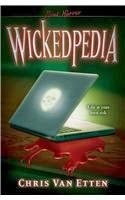
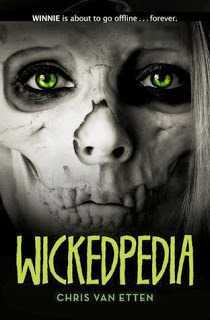
Wickedpedia by Chris Van Etten: Cole and Greg love playing practical jokes through Wikipedia. They edit key articles and watch their classmates crash and burn giving oral reports on historical figures like Genghis Khan, the first female astronaut on Jupiter. So after the star soccer player steals Cole's girlfriend, the boys take their revenge by creating a Wikipedia page for him, an entry full of outlandish information including details about his bizarre death on the soccer field. It's all in good fun, until the soccer player is killed in a freak accident . . . just as Cole and Greg predicted. The uneasy boys vow to leave Wikipedia alone but someone continues to edit articles about classmates dying in gruesome ways . . . and those entries start to come true as well. To his horror, Cole soon discovers that someone has created a Wikipedia page for him, and included a date of death. He has one week to figure out who's behind the murders, or else he's set to meet a pretty grisly end. (Description via Goodreads).
This was another Point Horror I found two covers for. Again, I'm pretty sure that the one on the right is the cover that will be available when Wickedpedia goes on sale next June, but the one on the left is too campy/awesome to not share. A bleeding laptop! But that tag line for the other cover is brilliant.
In addition to what Scholastic's doing for teen horror, Penguin is doing a couple of neat things for adult horror classics, many of which have excellent crossover appeal for teen readers.
First, they rereleased a number of older Shirley Jackson titles this year and have plans to release more. The rereleases have new and super appealing covers and are available as paperbacks, with introductions by well-known authors, including Francine Prose.
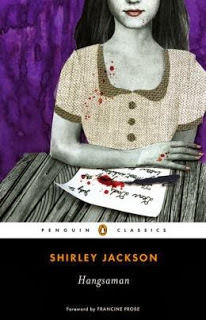

Hansaman by Shirley Jackson: Seventeen-year-old Natalie Waite longs to escape home for college. Her father is a domineering and egotistical writer who keeps a tight rein on Natalie and her long-suffering mother. When Natalie finally does get away, however, college life doesn't bring the happiness she expected. Little by little, Natalie is no longer certain of anything--even where reality ends and her dark imaginings begin. Chilling and suspenseful, Hangsaman is loosely based on the real-life disappearance of a Bennington College sophomore in 1946.
The Road Through the Wall by Shirley Jackson: Pepper Street is a really nice, safe California neighborhood. The houses are tidy and the lawns are neatly mowed. Of course, the country club is close by, and lots of pleasant folks live there. The only problem is they knocked down the wall at the end of the street to make way for a road to a new housing development. Now, that's not good, it's just not good at all. Satirically exploring what happens when a smug suburban neighborhood is breached by awful, unavoidable truths, The Road Through the Wall is the tale that launched Shirley Jackson's heralded career.
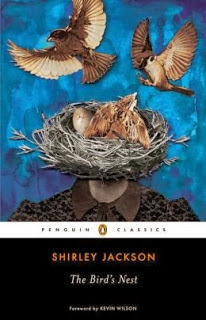
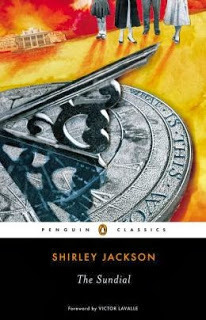
The Bird's Nest by Shirley Jackson: Elizabeth is a demure twenty-three-year-old wiling her life away at a dull museum job, living with her neurotic aunt, and subsisting off her dead mother’s inheritance. When Elizabeth begins to suffer terrible migraines and backaches, her aunt takes her to the doctor, then to a psychiatrist. But slowly, and with Jackson’s characteristic chill, we learn that Elizabeth is not just one girl—but four separate, self-destructive personalities. The Bird’s Nest, Jackson’s third novel, develops hallmarks of the horror master’s most unsettling work: tormented heroines, riveting familial mysteries, and a disquieting vision inside the human mind.
The Sundial by Shirley Jackson: Aunt Fanny has always been somewhat peculiar. No one is surprised that while the Halloran clan gathers at the crumbling old mansion for a funeral she wanders off to the secret garden. But when she reports the vision she had there, the family is engulfed in fear, violence, and madness. For Aunt Fanny's long-dead father has given her the precise date of the final cataclysm.
Both The Bird's Nest and The Sundial will be available in January.
Penguin also worked with horror master Guillermo del Toro to chose six classic horror novels that were made into gorgeous deluxe hardcover editions. Del Toro wrote the introductions to each of these new editions as well.
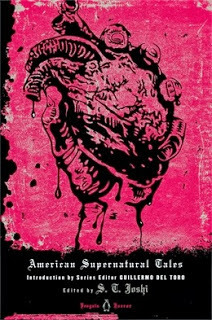
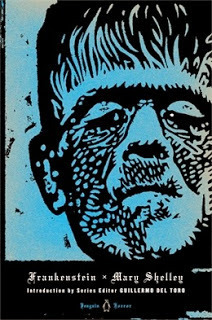
American Supernatural Tales edited by S. T. Joshi
Frankenstein by Mary Shelley
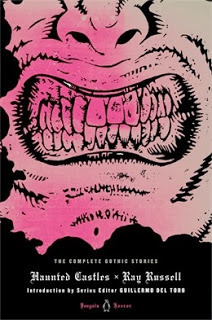
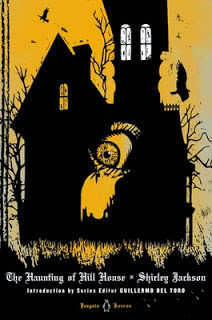
Haunted Castles by Ray Russell
The Haunting of Hill House by Shirley Jackson
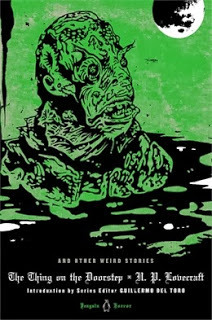

The Thing on the Doorstep by H. P. Lovecraft
The Raven by Edgar Allan Poe
I know I wouldn't mind having all of those on my shelves because they're equal parts gorgeous and haunting, as they should be. I think maybe the Jackson cover might edge out the others as my favorite one (the eye through the castle!).
Any other horror reboots or recovers you've seen in the last year or so? I'd love to know of more if there are others.






 Related StoriesDual Review: Engines of the Broken World by Jason VanheeChasing Shadows by Swati AvasthiFriday Never Leaving by Vikki Wakefield
Related StoriesDual Review: Engines of the Broken World by Jason VanheeChasing Shadows by Swati AvasthiFriday Never Leaving by Vikki Wakefield
Did you know that Scholastic used to have a horror imprint called Point Horror? It started out back in 1991 and it was where some of the better-known scary books for teens were published back in the day, including books by R. L. Stine, Caroline B. Cooney, and Christophe Pike. When the books were doing well, they were doing well -- Pike and Stine in particular published a ton of books through Point Horror. I'm pretty sure I read a boat load of them when I was a teen, which makes sense since the imprint itself was aimed at teen girls like me.
The imprint died out between 2004 and 2005.
But Scholastic is rebooting their Point Horror series. To me it seems like it's aimed at exactly the same readership it was back in the 90s and early 00s, and there are three new titles out or coming out shortly to put on your radar. All of them are paperback originals and deal in some capacity with "the internet world."
All descriptions come from WorldCat.


Defriended by Ruth Baron: A friend request from beyond the grave ... Jason has met the perfect girl. OK, so maybe he hasn't actually MET Lacey yet, but they talk online all the time. Yet despite spending most nights chatting, Lacey refuses to meet up in person. Suspicious, Jason starts googling, and his cyberstalking leads to a shocking discovery: According to multiple newspapers, Lacey died a year earlier. Soon, Jason finds himself enmeshed in a disturbing mystery. Has he found a way to iChat with the dead? Or is someone playing a dangerous trick? Either way, Jason has to discover the truth before it's too late. You can't put up away messages from beyond the grave.
I have seen both covers as being available, but I think the one on the right is the actual cover, since it fits the style of the others in this relaunch. I don't know about anyone else, but the one on the left is really speaking to me -- it's perfectly teen scream. But I also really love the tag line for the cover on the right. Defriended is available now.

Identity Theft by Anna Davies: Someone claiming to be Hayley posts incriminating photographs of her online, jeopardizing her chance at a college scholarship, but when the photographs reveal dark secrets in her family's past, Hayley learns her very life is at stake.
The red eyes are creepy, and even though it's a pretty non-memorable cover otherwise, I think the blood-colored eyes make it stand out. There is probably also little question this is a scary book. Identity Theft is available now.


Wickedpedia by Chris Van Etten: Cole and Greg love playing practical jokes through Wikipedia. They edit key articles and watch their classmates crash and burn giving oral reports on historical figures like Genghis Khan, the first female astronaut on Jupiter. So after the star soccer player steals Cole's girlfriend, the boys take their revenge by creating a Wikipedia page for him, an entry full of outlandish information including details about his bizarre death on the soccer field. It's all in good fun, until the soccer player is killed in a freak accident . . . just as Cole and Greg predicted. The uneasy boys vow to leave Wikipedia alone but someone continues to edit articles about classmates dying in gruesome ways . . . and those entries start to come true as well. To his horror, Cole soon discovers that someone has created a Wikipedia page for him, and included a date of death. He has one week to figure out who's behind the murders, or else he's set to meet a pretty grisly end. (Description via Goodreads).
This was another Point Horror I found two covers for. Again, I'm pretty sure that the one on the right is the cover that will be available when Wickedpedia goes on sale next June, but the one on the left is too campy/awesome to not share. A bleeding laptop! But that tag line for the other cover is brilliant.
In addition to what Scholastic's doing for teen horror, Penguin is doing a couple of neat things for adult horror classics, many of which have excellent crossover appeal for teen readers.
First, they rereleased a number of older Shirley Jackson titles this year and have plans to release more. The rereleases have new and super appealing covers and are available as paperbacks, with introductions by well-known authors, including Francine Prose.


Hansaman by Shirley Jackson: Seventeen-year-old Natalie Waite longs to escape home for college. Her father is a domineering and egotistical writer who keeps a tight rein on Natalie and her long-suffering mother. When Natalie finally does get away, however, college life doesn't bring the happiness she expected. Little by little, Natalie is no longer certain of anything--even where reality ends and her dark imaginings begin. Chilling and suspenseful, Hangsaman is loosely based on the real-life disappearance of a Bennington College sophomore in 1946.
The Road Through the Wall by Shirley Jackson: Pepper Street is a really nice, safe California neighborhood. The houses are tidy and the lawns are neatly mowed. Of course, the country club is close by, and lots of pleasant folks live there. The only problem is they knocked down the wall at the end of the street to make way for a road to a new housing development. Now, that's not good, it's just not good at all. Satirically exploring what happens when a smug suburban neighborhood is breached by awful, unavoidable truths, The Road Through the Wall is the tale that launched Shirley Jackson's heralded career.


The Bird's Nest by Shirley Jackson: Elizabeth is a demure twenty-three-year-old wiling her life away at a dull museum job, living with her neurotic aunt, and subsisting off her dead mother’s inheritance. When Elizabeth begins to suffer terrible migraines and backaches, her aunt takes her to the doctor, then to a psychiatrist. But slowly, and with Jackson’s characteristic chill, we learn that Elizabeth is not just one girl—but four separate, self-destructive personalities. The Bird’s Nest, Jackson’s third novel, develops hallmarks of the horror master’s most unsettling work: tormented heroines, riveting familial mysteries, and a disquieting vision inside the human mind.
The Sundial by Shirley Jackson: Aunt Fanny has always been somewhat peculiar. No one is surprised that while the Halloran clan gathers at the crumbling old mansion for a funeral she wanders off to the secret garden. But when she reports the vision she had there, the family is engulfed in fear, violence, and madness. For Aunt Fanny's long-dead father has given her the precise date of the final cataclysm.
Both The Bird's Nest and The Sundial will be available in January.
Penguin also worked with horror master Guillermo del Toro to chose six classic horror novels that were made into gorgeous deluxe hardcover editions. Del Toro wrote the introductions to each of these new editions as well.


American Supernatural Tales edited by S. T. Joshi
Frankenstein by Mary Shelley


Haunted Castles by Ray Russell
The Haunting of Hill House by Shirley Jackson


The Thing on the Doorstep by H. P. Lovecraft
The Raven by Edgar Allan Poe
I know I wouldn't mind having all of those on my shelves because they're equal parts gorgeous and haunting, as they should be. I think maybe the Jackson cover might edge out the others as my favorite one (the eye through the castle!).
Any other horror reboots or recovers you've seen in the last year or so? I'd love to know of more if there are others.







 Related StoriesDual Review: Engines of the Broken World by Jason VanheeChasing Shadows by Swati AvasthiFriday Never Leaving by Vikki Wakefield
Related StoriesDual Review: Engines of the Broken World by Jason VanheeChasing Shadows by Swati AvasthiFriday Never Leaving by Vikki Wakefield
Published on October 07, 2013 22:00
October 6, 2013
Chasing Shadows by Swati Avasthi
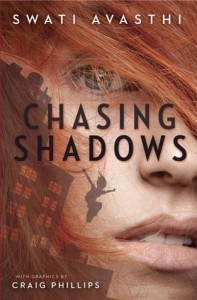
Maybe all I have is my own two feet. And the confidence that they can bear my weight when the world goes sideways. Maybe that's enough.
Corey, Holly, and Savitri are best friends -- Corey and Holly are brother and sister, while Corey and Sav have a relationship. Their bond is tight, and one of the activities that keeps them connected as a threesome is their interest and participation in freerunning through different areas of Chicago. It's their favorite activity, right up there with being mega invested in comics.
The night the story opens, things look like they're solid, or about as solid as they could be knowing what's between them. The three of them are freerunning, and when their fun comes to an end, Corey and Holly hop into one car, while Sav hops into another. Lingering in the back of their minds, though, is the inevitable future. They're going to be pulled apart because Sav wants to attend school outside Chicago, even though it means leaving behind her best friends and her family. But Sav's torn about this, too, because she loves the city and she loves her friends and boyfriend.
That night, everything changes when the car Corey and Holly are in is approached by a gunman, shots are fired, Corey dies, and Holly falls into a deep coma.
Chasing Shadows is Swati Avasthi's sophomore novel, and it's a hybrid graphic novel, illustrated by Craig Phillips. Together, the pair write an incredibly evocative, engaging, and wholly different type of story about grief and, more interestingly, friendship.
The three friends in this story are well-drawn, and not only are they well-drawn both through the writing and through the illustrations, they're interesting because they partake in activities and have passion for topics that aren't always readily seen in YA. But what makes it noteworthy isn't that they're different. It's instead that the story embraces these things about them in a way that makes them your typical, average teenagers. Sure, they engage in freerunning. Sure, they love comic books. Sure, Sav is a main character of color (she's Indian). But it's never about the fact these teen do things that are outside the norm of many YA characters. It's instead that they're normal.
Avasthi's story is told through two points of view, and this set up is important to the underlying theme of friendship. Holly, who is in a coma and struggling not only with all-encompassing grief but also an unnamed mental illness -- which may or may not have been brought up through the grief and coma -- brings us into a really dark world. She wants to give up and die in order to be with her brother. Much of her voice is through the graphic elements, which ties into not just her love for comics, but also ties into her relationship with Sav and Sav's heritage. As readers, we know there is something really wrong with Holly, too. Her thinking is marred by her grief, but it's more than that. She truly believes she's got nothing worth living for, and in her post-coma recovery, it becomes clear that she's not the person she was just weeks ago. Something is off.
Savitri is the other voice, and she, too, is struggling with immense grief. She's not only lost her boyfriend in the incident, but her best friend Holly is hurting and is ill. And it's that illness which pulls Sav into considering the value of friendship. How much does a person give to another in order to make it work? How much do you have to sacrifice of yourself in order to be there for a friend? Does it change or shift depending on the state that that friend is in? Avasthi does a spectacular job of allowing the reader to not only consider Sav's empathy for Holly's situation but also forcing the reader to understand that Sav's life and future can't be put on hold for the sake of her friend, either. At what point does she make a decision to stay with her friend and help her through her illness and at what point does she have to walk away? The choice Sav makes is -- spoiler -- the riskier one, but it's ultimately what made this book not just a good read, but a great one. I think too often there's a desire to go for the easier, happier ending, especially when it comes to a story about grief and loss and mental illness. But Avasthi doesn't do that here. She instead serves the characters in the way that they best need to be served.
The struggle and consideration and reconsideration of friendship is what stands out in Chasing Shadows, even more so than the grief element. In that respect, the comic panels are brilliant because they unify the two girls through their shared passions but these panels also divide them because of the stories within them and what those stories mean to them as individuals. For Holly, it's a coping mechanism. For Sav, it's part of her heritage. Avasthi never names a mental illness here, either, which gives it almost more weight than had she diagnosed her character's pain. It's dealt with with incredible respect and care, and in many ways, it's that care and honor of the illness (and even more so the girl suffering with it) that makes what Sav chooses to do even more painful . . . and more honest.
Chasing Shadows is well-paced, but the writing is never sacrificed. This is a strongly written, gritty book which is only enhanced by the graphic aspect. It never feels like a gimmick; instead, it serves a marked purpose that further develops the characters and adds depth to their relationships. In many ways, this feels like a true YA novel to me. It has great teen appeal to it, and the hybridization enhances that. As noted earlier, too, Phillips's illustrations are strong. They never felt like an afterthought.
Although this book makes use of the graphic elements and does delve into some mythology, it's wholly contemporary. There's nothing fantastical here. In many ways, it's through those non-straightforward storytelling elements that the book is an excellent example of contemporary realistic YA. Readers who dug Avasthi's debut novel Split will find this to be an excellent next read, and anyone who wants a gritty, painful story about loss, friendship, and about "what comes next" will want to pick this one up. Because this book delves into mental illness in a really unique manner, I would go so far as to say those readers who loved the way in which Nova Ren Suma explores mental illness in 17 & Gone will want to give this book a read, too. They aren't at all the same, and the styles are markedly different, but the ways in which both books give an interesting glimpse into mental illness make them a worthwhile pairing.
This is a book that will linger in my mind for a long time, and it's one that solidifies Avasthi as a must-read author for me. She gets tough contemporary YA so right.
Chasing Shadows is available now from Random House. Review copy picked up at ALA. Swati will be sharing a guest post later this week, too, on the very topic of friendship in YA and in her book.







 Related StoriesDual Review: Engines of the Broken World by Jason VanheeFriday Never Leaving by Vikki WakefieldThin Space by Jody Casella
Related StoriesDual Review: Engines of the Broken World by Jason VanheeFriday Never Leaving by Vikki WakefieldThin Space by Jody Casella
Published on October 06, 2013 22:00
October 4, 2013
Links of Note: October 5, 2013
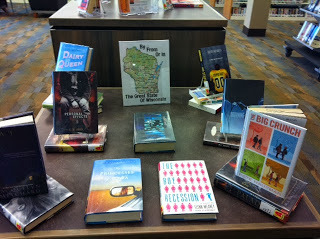 One of my recent displays at work -- Wisconsin pride.
One of my recent displays at work -- Wisconsin pride.We're gearing up for a week-long series on reader's advisory this month -- not next week, but likely the week after -- so I thought I'd share one of my own displays above. It doesn't really look like that anymore because it's been picked through (an awesome problem to have) but one thing I love about reader's advisory is how easy it is to pick up on something small and run with it. So here, authors with ties to Wisconsin or books set in Wisconsin.
Here's a roundup of interesting reads from the last couple of weeks. Many of these are longer pieces, so sit back, grab a coffee or two, and enjoy.
I kicked off talking about reader's advisory because I wanted to link to one of my favorite resources for reader's advisory with adults, which is Becky's amazing RA for All blog. Becky's a librarian in the Chicago suburbs and in addition to her incredible blog, she's the author of a reader's advisory book to horror. In addition to THAT, she runs a month-long series over at her horror reader's advisory blog all about horror. Spend some time this month learning about horror novels and resources to RA for horror, and put her RA for All blog on your radar, too.
Over at PW's ShelfTalker blog, they ask the question of the proper definition of young adult literature, and the answer that they found most satisfying is one I happen to think is really damn good, too. Note it's not a genre.
When Goodreads did a Friday afternoon policy change and started deleting reviews and book shelves without warning, what actually ended up disappearing? Here's a little bit of a look.
You're better able to understand people if you read literary fiction, as opposed to other types of fiction. Not entirely a surprising find -- you have to pay more careful attention when you're reading literary fiction, which ignites a part of your brain that requires stronger attention. But still interesting. An interesting piece in the New Yorker about female beauty and literature. I hope someone tackles this subject from a YA perspective, as opposed to an adult literary perspective, at some point because it's fascinating. What does your favorite Babysitter's Club character say about you? Not naming mine, but I will say about half of it is right and the other half is not. Malinda Lo wrote a series of posts on LGBTQ in YA this week which are absolutely necessary reading. I particularly liked this post on "Coming out 2.0."Are you a book blogger who has been doing this for a while or a former book blogger who has stopped? Kim at Sophisticated Dorkiness has a survey for you to take on blogger burn out and more. NPR had an interesting piece on what it is that's terrifying teens today, as seen through YA fiction. I wish it had a little more to it and talked a bit more about realistic fiction, but this is a solid and fascinating read. So this isn't book related at all but it's too neat not to share. Here's what the Monopoly properties look like in real life. While this is from a British source, it's worthwhile reading and thinking. Here's a discussion and book list for black girls, and why it is we need more books that empower them. The Belle Jar is one of my favorite blogs. Every post she writes knocks it out of the park, and this one on tips for writers is no different. I didn't know how much I needed a post about literary magazines geared for YA fiction until I read this post over at YA Highway. I knew about YARN, but I did not know about many of the others here. Go check it out -- and if you're not in it for the writing angle, be in it for the fact it's a resource for YA readers to find more to read. What are the awards and recognitions in librarianship? Here's a thorough look at it over at In the Library with the Lead Pipe, which refers to the excellent piece Val Forrestal wrote last month. Don't forget to nominate books for consideration in this year's Cybils. The nominating period is open through October 15 -- and I'm going to try to write up a post before then with titles that you can nominate if you have not done so by that point. Kim is serving this year on the second round of panels for YA Speculative Fiction.
For some reason, our blog design isn't playing nice with our giveaway box any more, so I had to take it down. I haven't figured out a solution yet, but in the mean time, you have a chance to win Trish Doller's Where the Stars Still Shine through the end of next week and a chance to win Jason Vanhee's Engines of the Broken World through the end of the month.
Also, if you're a YALSA member and can help me out by signing my petition to get on the Printz ballot, I'd be so grateful.
In addition to my teasing about a reader's advisory week, I should also tease that I've got a contemporary YA week all set up to run in November and I am so excited about it. I took a long look at the ideas you suggested for topics you'd like to see addressed and merged them with some of the ideas I've been thinking about -- and the slate of guest writers and topics is, I think, really great. There will be something for everyone.
If you've read anything great in the last couple weeks I may have missed, I'd love to know in the comments.







 Related StoriesLinks of Note: 9/21/13Links of Note: 9/7/13Links of Note, 8/24/13
Related StoriesLinks of Note: 9/21/13Links of Note: 9/7/13Links of Note, 8/24/13
Published on October 04, 2013 22:00
October 3, 2013
Kid Lit Con 2013: Join Us!
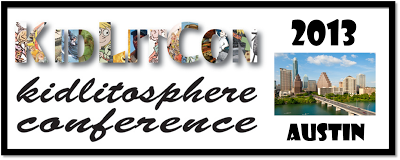
Did you know this year marks the 7th year for the annual KidLitCon?
As you may know, KidLitCon is my favorite conference. It's not like other events, where you have loads of panels, exhibits, and other meetings to choose from over the course of many days. KidLitCon is one day or two days long, with a small slate of programs, all focused on blogging and children's/teen literature. More than that, though, it's an intimate event: between 100 and 200 people attend, making it the kind of con where you can get to talk to any and everyone you wish to. It's laid back, and the emphasis is on making connections and conversation on the small -- but mighty! -- scale.
I've gone the last few years, and every time I come home after, I feel reengaged and energized. It gets me excited to blog again, and it gets me excited to reconnect with not just bloggers I have known a long time, but to explore the blogging world and "meet" other people and voices. The impact of this event didn't really hit me until I went to this year's book blogger con at BEA and realized that it wasn't at all like KidLitCon.
KidLitCon is coordinated, developed, and run by bloggers for bloggers. That's it. But it's open to bloggers AND non-bloggers alike -- the connecting theme among everyone who attends is a love and appreciation for kidlit. So you'll rub shoulders with those who blog, those who write, and those who share kid lit as teachers, librarians, and more.
This year, Kimberly and I had the opportunity to be a part of the group organizing the event, and we're excited to share what is in the works. KidLitCon will be held Saturday, November 9, down in beautiful Austin, Texas. We're in the midst of coordinating a pre-conference event for the day before, as well, and details are coming together as we speak.
KidLitCon will be at St. David's Episcopal Church right in downtown, and we've already got our keynote speaker set up -- you'll get the chance to hear Cynthia Leitich Smith. There is a lunch planned for the conference, and we've also got a dinner location post-event at Scholz Garten.
I'm eager to meet up with many of the people I've been blogging and talking with for years now (years!). I'm equally excited to meet new faces.
Want to know more about this year's event and sign up? Registration is open, and through October 11, the cost is $55. After that, the price increases to $65 -- and this is an event that is always worth every single penny. You also have a little bit of time left to propose a panel session if you want to speak at the event, as well. Details are here. Continue to keep an eye on the Kidlitosphere website, too, for more information about hotels and things to do in Austin as the event gets closer.
And because I know you want to know more about what a day at KidLitCon really looks like, here's are my recaps from the 2012 event in New York City, the 2011 event in Seattle, and the 2010 event in Minneapolis.
I can't wait to see everyone in early November.








Published on October 03, 2013 22:00
October 2, 2013
Get (sub)Genrefied: Dystopia
Every month, we're highlighting one genre within YA fiction as part of Angela's reader's advisory challenge. So far, we've discussed horror, science fiction, high fantasy, mysteries and thrillers, verse novels, contemporary realistic fiction, historical fiction, graphic novels, and romances. October's focus is actually a subgenre: dystopias.
Oh readers. I (Kimberly) have been waiting all year for this genre guide. I know so many people are tired of dystopias, but I am not (and neither are a lot of teens). I love them, and I love that there are so many to choose from! Like any other genre, you have to dig through some bad or mediocre stuff to get to the gems - but it is so worth it.
So, what exactly is a dystopia, other than a subgenre of science fiction? I've written about this a little bit before, but clearly, there are many who take a much broader view of the subgenre. At its most basic, a dystopia posits a future world whose people exist in a repressed, controlling society, usually watched over by a "Big Brother" type character, organization, or political unit. Often, this political unit will proclaim that their people live in a utopian society, or at least a better one than what came before. The Hunger Games is an example that falls very neatly into this definition.
What this means is that it's not enough for a future world to simply suck. It has to suck in a particular way.
I understand why a lot of people would broaden the definition to simply mean "an unpleasant future world." If you do a simple Google search for "dystopia definition," you'll find many definitions that state this precise thing. But here's the thing: such a basic definition doesn't say much about appeal factors, doesn't say much about the severity or kind of conflict in the book, and, most importantly, it lumps almost all science fiction (most of which is set in the future) into one subgenre, when SF is endlessly varied and imaginative. Think about it: all novels have conflict, and the conflict will make things unpleasant for the characters involved. Future + conflict doesn't automatically equal dystopia. It just equals SF.
That said, some dystopian appeal factors overlap with other genres or subgenres. I find this most apparent with post-apocalyptic books (these subgenres actually share a shelf in my Goodreads account). Often, an apocalyptic event will cause a dystopian society to form (such as in Ilsa Bick's Ashes), and you'll find both subgenres in one book. Both subgenres are also usually high-concept, full of greater-than-average danger, and involve people who have used cataclysmic events as an opportunity to seize power.
I promise Kelly and I are actually going to discuss more than just defnitions. So let's move on.
Because dystopia is a subgenre of science fiction, the resources we discussed in our science fiction genre guide are applicable here as well. You'll find dystopias honored with the SF awards, discussed on the SF blogs, and written by authors at the SF imprints we listed there.
We also encourage you to check out Presenting Lenore's archive of dystopian fiction. For the past few years, Lenore has dedicated one (or two!) months per year to reading and writing about dystopias, featuring her own reviews, guest posts, and author interviews.
A few other resources:
Stacey at Pretty Books has a pretty extensive list of recent YA dystopias, including some forthcoming titles, and she reviews them on her blog.
Since dystopias are so popular, a lot of book blogs will tag them all for handy reference. These include the Book Smugglers, Forever Young Adult, and of course, us here at Stacked.
Goodreads lists are selectively useful. Here's a collection of them, but you'll need to dig deep and skip past the first several pages to get to ones you may not already know.
A lot of people like to write about what makes dystopias so popular with teens. I endorse none of these viewpoints, but present them here for your perusal: University of Alberta, The Guardian, Wired, YALSA's The Hub.
The representation of people of color in science fiction is a continuing problem the SF community struggles with, and the dystopian subgenre is not immune. Victoria Law at Bitch Magazine discusses this issue in a blog series called Girls of Color in Dystopia. It's definitely worth a read, and terrific for brushing up on some standout YA SF featuring people of color.
Below are some recent YA dystopias published within the last year or so. Descriptions come from Worldcat or Goodreads.
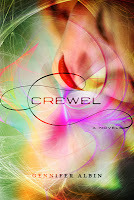
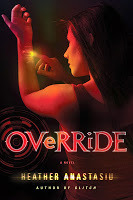
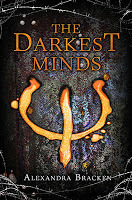
Crewel by Gennifer Albin: Gifted with the unusual ability to embroider the very fabric of life,
sixteen-year-old Adelice is summoned by Manipulation Services to become a
Spinster, a move that will separate her from her beloved family and
home forever. Kimberly's review
Override by Heather Anastasiu: Having escaped the enslavement of the Community and the Chancellor, Zoe
is finally free but far from safe as she and Adrien hide at the
Foundation, an academy that trains teen glitchers to fight in the
Resistance movement. Sequel to Glitch.
The Darkest Minds by Alexandra Bracken: Sixteen-year-old Ruby breaks out of a government-run 'rehabilitation
camp' for teens who acquired dangerous powers after surviving a virus
that wiped out most American children.

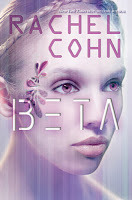
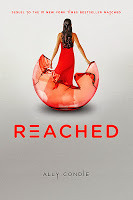
The Testing by Joelle Charbonneau: Sixteen-year-old Malencia (Cia) Vale is chosen to participate in The
Testing to attend the University; however, Cia is fearful when she
figures out her friends who do not pass The Testing are disappearing. Kimberly's review
Beta by Rachel Cohn: On a futuristic island paradise where humans are served by enslaved
clones, a sixteen-year-old clone named Elysia seeks her own freedom.
Reached by Ally Condie: In search of a better life, Cassia joins a widespread rebellion against
Society, where she is tasked with finding a cure to the threat of
survival and must choose between Xander and Ky. Conclusion to Matched trilogy.
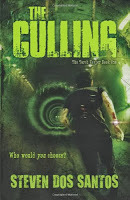
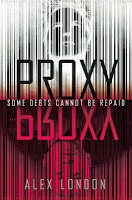
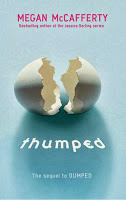
The Culling by Steven dos Santos: In a futuristic world ruled by a totalitarian government called the
Establishment, Lucian "Lucky" Spark and four other teenagers are
recruited for the Trials. They must compete not only for survival but to
save the lives of their Incentives, family members whose lives depend
on how well they play the game.
Proxy by Alex London: Privileged Knox and and his proxy, Syd, are thrown together to overthrow the system.
Thumped by Megan McCafferty: Melody and Harmony are without a doubt two of the most powerful pregnant
teens on the planet, and there's only one thing they could do that
would make them more famous than they already are: tell the truth. Sequel to Bumped.
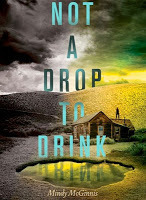
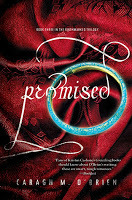
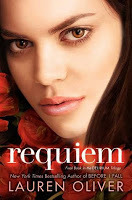
Not a Drop to Drink by Mindy McGinnis: Sixteen-year-old Lynn will do anything to protect her valuable water
source, but the arrival of new neighbors forces her to reconsider her
attitudes.
Promised by Caragh O'Brien: Gaia succeeds in leading her people to Wharfton and the Enclave, but
rebellion there threatens them all just when everything they have
dreamed of seems to be at hand. Conclusion to Promised trilogy.
Requiem by Lauren Oliver: While Lena navigates the increasingly dangerous Wilds, her best friend, Hana, lives a safe, loveless life in Portland. Conclusion to Delirium trilogy.
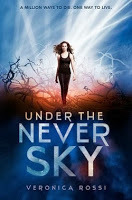
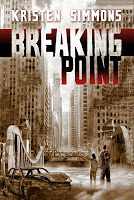
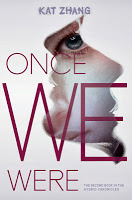
Under the Never Sky by Veronica Rossi: Aria and Perry, two teens from radically different societies--one highly
advanced, the other primitive--hate being dependent on one another
until they overcome their prejudices and fall in love, knowing they
can't stay together. Kimberly's review
Breaking Point by Kristen Simmons: After escaping prison, Ember Miller and Chase Jennings are taken in by
the Resistance but when Ember tops the government's most-wanted list,
Chase urges her to run and Ember must decide whether to hide again or
fight back. Sequel to Article 5.
Once We Were by Kat Zhang: After the destruction of the Graveyard, Connor and Lev are on the run,
seeking a woman who may be the key to bringing down unwinding forever
while Cam, the rewound boy, tries to prove his love for Risa by bringing
Proactive Citizenry to its knees. Sequel to What's Left of Me.
Below are a few upcoming YA dystopias to look forward to.
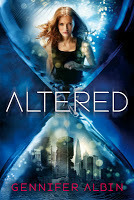
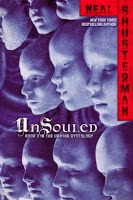
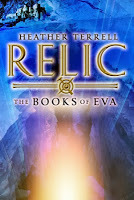
Altered by Gennifer Albin (October 2013): Sixteen-year-old Adelice Lewys is called upon to harness her power in a
battle for control of Earth, but as she uncovers the truth about her own
history she learns that everyone holds secrets, some of which may drive
her from her love, Jost, into his brother Erik's arms. Sequel to Crewel.
UnSouled by Neal Shusterman (October 2013): After the destruction of the Graveyard, Connor and Lev are on the run,
seeking a woman who may be the key to bringing down unwinding forever
while Cam, the rewound boy, tries to prove his love for Risa by bringing
Proactive Citizenry to its knees. Sequel to Unwind.
Relic by Heather Terrell (October 2013): Searching icy wastelands for Relics, artifacts of the corrupt
civilization that existed before The Healing drowned the world, Eva
unleashes a great danger when she unearths a Relic that gives voice to
the unspeakable.
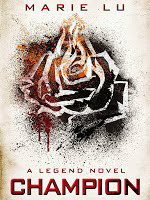
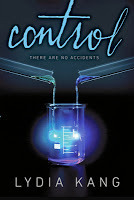

Champion by Marie Lu (November 2013): June and Day have sacrificed so much for the people of the Republic--and
each other--and now their country is on the brink of a new existence.
Just when a peace treaty is imminent, a plague outbreak causes panic in
the Colonies, and war threatens the Republic's border cities. Conclusion to Legend trilogy.
Control by Lydia Kang (December 2013): In 2150, when genetic manipulation has been outlawed, seventeen-year-old
Zelia must rescue her kidnapped sister with the help of a band of
outcasts with mutated genes.
Independent Study by Joelle Charbonneau (January 2014): Now a freshman at the University in Tosu City with her hometown
sweetheart, Tomas, Cia Vale attempts to expose the ugly truth behind the
government's grueling and deadly Testing put her and her loved ones in
great danger. Sequel to The Testing.
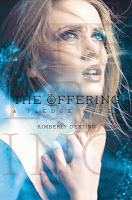
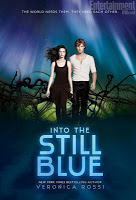
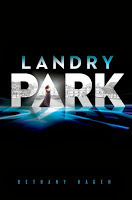
The Offering by Kimberly Derting (January 2014): True love—and world war—is at stake in the conclusion to The Pledge trilogy, a dark and romantic blend of dystopia and fantasy.
Into the Still Blue by Veronica Rossi (January 2014): Their love and their
leadership have been tested. Now it's time for Perry and Aria to unite
the Dwellers and the Outsiders in one last desperate attempt to bring
balance to their world. Conclusion to Under the Never Sky trilogy.
Landry Park by Bethany Hagen (February 2014): In a futuristic, fractured United States where the oppressed Rootless
handle the raw nuclear material that powers the Gentry's lavish
lifestyle, seventeen-year-old Madeline Landry must choose between taking
over her father's vast estate or rebelling against everything she has
ever known, in the name of justice.
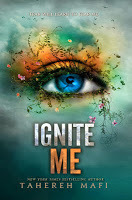
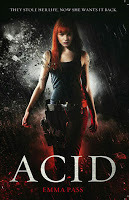

Ignite Me by Tahereh Mafi (February 2014): Juliette now knows she
may be the only one who can stop the Reestablishment. But to take them
down, she'll need the help of the one person she never thought she could
trust: Warner. And as they work together, Juliette will discover that
everything she thought she knew-about Warner, her abilities, and even
Adam-was wrong. Conclusion to the Shatter Me series.
ACID by Emma Pass (March 2014): 2113. In Jenna Strong's world, ACID - the most brutal, controlling
police force in history - rule supreme. No throwaway comment or muttered
dissent goes unnoticed - or unpunished. And it was ACID agents who locked Jenna away for life, for a bloody crime she struggles to remember.
The Haven by Carol Lynch Williams (March 2014): For the teens at The
Haven, the outside world, just beyond the towering stone wall that
surrounds the premises, is a dangerous unknown. It has always been this
way, ever since the hospital was established in the year 2020. But The
Haven is more than just a hospital; it is their home.






 Related StoriesGet Genrefied: RomanceGet Genrefied*: Graphic Novels
Related StoriesGet Genrefied: RomanceGet Genrefied*: Graphic Novels
Oh readers. I (Kimberly) have been waiting all year for this genre guide. I know so many people are tired of dystopias, but I am not (and neither are a lot of teens). I love them, and I love that there are so many to choose from! Like any other genre, you have to dig through some bad or mediocre stuff to get to the gems - but it is so worth it.
So, what exactly is a dystopia, other than a subgenre of science fiction? I've written about this a little bit before, but clearly, there are many who take a much broader view of the subgenre. At its most basic, a dystopia posits a future world whose people exist in a repressed, controlling society, usually watched over by a "Big Brother" type character, organization, or political unit. Often, this political unit will proclaim that their people live in a utopian society, or at least a better one than what came before. The Hunger Games is an example that falls very neatly into this definition.
What this means is that it's not enough for a future world to simply suck. It has to suck in a particular way.
I understand why a lot of people would broaden the definition to simply mean "an unpleasant future world." If you do a simple Google search for "dystopia definition," you'll find many definitions that state this precise thing. But here's the thing: such a basic definition doesn't say much about appeal factors, doesn't say much about the severity or kind of conflict in the book, and, most importantly, it lumps almost all science fiction (most of which is set in the future) into one subgenre, when SF is endlessly varied and imaginative. Think about it: all novels have conflict, and the conflict will make things unpleasant for the characters involved. Future + conflict doesn't automatically equal dystopia. It just equals SF.
That said, some dystopian appeal factors overlap with other genres or subgenres. I find this most apparent with post-apocalyptic books (these subgenres actually share a shelf in my Goodreads account). Often, an apocalyptic event will cause a dystopian society to form (such as in Ilsa Bick's Ashes), and you'll find both subgenres in one book. Both subgenres are also usually high-concept, full of greater-than-average danger, and involve people who have used cataclysmic events as an opportunity to seize power.
I promise Kelly and I are actually going to discuss more than just defnitions. So let's move on.
Because dystopia is a subgenre of science fiction, the resources we discussed in our science fiction genre guide are applicable here as well. You'll find dystopias honored with the SF awards, discussed on the SF blogs, and written by authors at the SF imprints we listed there.
We also encourage you to check out Presenting Lenore's archive of dystopian fiction. For the past few years, Lenore has dedicated one (or two!) months per year to reading and writing about dystopias, featuring her own reviews, guest posts, and author interviews.
A few other resources:
Stacey at Pretty Books has a pretty extensive list of recent YA dystopias, including some forthcoming titles, and she reviews them on her blog.
Since dystopias are so popular, a lot of book blogs will tag them all for handy reference. These include the Book Smugglers, Forever Young Adult, and of course, us here at Stacked.
Goodreads lists are selectively useful. Here's a collection of them, but you'll need to dig deep and skip past the first several pages to get to ones you may not already know.
A lot of people like to write about what makes dystopias so popular with teens. I endorse none of these viewpoints, but present them here for your perusal: University of Alberta, The Guardian, Wired, YALSA's The Hub.
The representation of people of color in science fiction is a continuing problem the SF community struggles with, and the dystopian subgenre is not immune. Victoria Law at Bitch Magazine discusses this issue in a blog series called Girls of Color in Dystopia. It's definitely worth a read, and terrific for brushing up on some standout YA SF featuring people of color.
Below are some recent YA dystopias published within the last year or so. Descriptions come from Worldcat or Goodreads.



Crewel by Gennifer Albin: Gifted with the unusual ability to embroider the very fabric of life,
sixteen-year-old Adelice is summoned by Manipulation Services to become a
Spinster, a move that will separate her from her beloved family and
home forever. Kimberly's review
Override by Heather Anastasiu: Having escaped the enslavement of the Community and the Chancellor, Zoe
is finally free but far from safe as she and Adrien hide at the
Foundation, an academy that trains teen glitchers to fight in the
Resistance movement. Sequel to Glitch.
The Darkest Minds by Alexandra Bracken: Sixteen-year-old Ruby breaks out of a government-run 'rehabilitation
camp' for teens who acquired dangerous powers after surviving a virus
that wiped out most American children.



The Testing by Joelle Charbonneau: Sixteen-year-old Malencia (Cia) Vale is chosen to participate in The
Testing to attend the University; however, Cia is fearful when she
figures out her friends who do not pass The Testing are disappearing. Kimberly's review
Beta by Rachel Cohn: On a futuristic island paradise where humans are served by enslaved
clones, a sixteen-year-old clone named Elysia seeks her own freedom.
Reached by Ally Condie: In search of a better life, Cassia joins a widespread rebellion against
Society, where she is tasked with finding a cure to the threat of
survival and must choose between Xander and Ky. Conclusion to Matched trilogy.



The Culling by Steven dos Santos: In a futuristic world ruled by a totalitarian government called the
Establishment, Lucian "Lucky" Spark and four other teenagers are
recruited for the Trials. They must compete not only for survival but to
save the lives of their Incentives, family members whose lives depend
on how well they play the game.
Proxy by Alex London: Privileged Knox and and his proxy, Syd, are thrown together to overthrow the system.
Thumped by Megan McCafferty: Melody and Harmony are without a doubt two of the most powerful pregnant
teens on the planet, and there's only one thing they could do that
would make them more famous than they already are: tell the truth. Sequel to Bumped.



Not a Drop to Drink by Mindy McGinnis: Sixteen-year-old Lynn will do anything to protect her valuable water
source, but the arrival of new neighbors forces her to reconsider her
attitudes.
Promised by Caragh O'Brien: Gaia succeeds in leading her people to Wharfton and the Enclave, but
rebellion there threatens them all just when everything they have
dreamed of seems to be at hand. Conclusion to Promised trilogy.
Requiem by Lauren Oliver: While Lena navigates the increasingly dangerous Wilds, her best friend, Hana, lives a safe, loveless life in Portland. Conclusion to Delirium trilogy.



Under the Never Sky by Veronica Rossi: Aria and Perry, two teens from radically different societies--one highly
advanced, the other primitive--hate being dependent on one another
until they overcome their prejudices and fall in love, knowing they
can't stay together. Kimberly's review
Breaking Point by Kristen Simmons: After escaping prison, Ember Miller and Chase Jennings are taken in by
the Resistance but when Ember tops the government's most-wanted list,
Chase urges her to run and Ember must decide whether to hide again or
fight back. Sequel to Article 5.
Once We Were by Kat Zhang: After the destruction of the Graveyard, Connor and Lev are on the run,
seeking a woman who may be the key to bringing down unwinding forever
while Cam, the rewound boy, tries to prove his love for Risa by bringing
Proactive Citizenry to its knees. Sequel to What's Left of Me.
Below are a few upcoming YA dystopias to look forward to.



Altered by Gennifer Albin (October 2013): Sixteen-year-old Adelice Lewys is called upon to harness her power in a
battle for control of Earth, but as she uncovers the truth about her own
history she learns that everyone holds secrets, some of which may drive
her from her love, Jost, into his brother Erik's arms. Sequel to Crewel.
UnSouled by Neal Shusterman (October 2013): After the destruction of the Graveyard, Connor and Lev are on the run,
seeking a woman who may be the key to bringing down unwinding forever
while Cam, the rewound boy, tries to prove his love for Risa by bringing
Proactive Citizenry to its knees. Sequel to Unwind.
Relic by Heather Terrell (October 2013): Searching icy wastelands for Relics, artifacts of the corrupt
civilization that existed before The Healing drowned the world, Eva
unleashes a great danger when she unearths a Relic that gives voice to
the unspeakable.



Champion by Marie Lu (November 2013): June and Day have sacrificed so much for the people of the Republic--and
each other--and now their country is on the brink of a new existence.
Just when a peace treaty is imminent, a plague outbreak causes panic in
the Colonies, and war threatens the Republic's border cities. Conclusion to Legend trilogy.
Control by Lydia Kang (December 2013): In 2150, when genetic manipulation has been outlawed, seventeen-year-old
Zelia must rescue her kidnapped sister with the help of a band of
outcasts with mutated genes.
Independent Study by Joelle Charbonneau (January 2014): Now a freshman at the University in Tosu City with her hometown
sweetheart, Tomas, Cia Vale attempts to expose the ugly truth behind the
government's grueling and deadly Testing put her and her loved ones in
great danger. Sequel to The Testing.



The Offering by Kimberly Derting (January 2014): True love—and world war—is at stake in the conclusion to The Pledge trilogy, a dark and romantic blend of dystopia and fantasy.
Into the Still Blue by Veronica Rossi (January 2014): Their love and their
leadership have been tested. Now it's time for Perry and Aria to unite
the Dwellers and the Outsiders in one last desperate attempt to bring
balance to their world. Conclusion to Under the Never Sky trilogy.
Landry Park by Bethany Hagen (February 2014): In a futuristic, fractured United States where the oppressed Rootless
handle the raw nuclear material that powers the Gentry's lavish
lifestyle, seventeen-year-old Madeline Landry must choose between taking
over her father's vast estate or rebelling against everything she has
ever known, in the name of justice.



Ignite Me by Tahereh Mafi (February 2014): Juliette now knows she
may be the only one who can stop the Reestablishment. But to take them
down, she'll need the help of the one person she never thought she could
trust: Warner. And as they work together, Juliette will discover that
everything she thought she knew-about Warner, her abilities, and even
Adam-was wrong. Conclusion to the Shatter Me series.
ACID by Emma Pass (March 2014): 2113. In Jenna Strong's world, ACID - the most brutal, controlling
police force in history - rule supreme. No throwaway comment or muttered
dissent goes unnoticed - or unpunished. And it was ACID agents who locked Jenna away for life, for a bloody crime she struggles to remember.
The Haven by Carol Lynch Williams (March 2014): For the teens at The
Haven, the outside world, just beyond the towering stone wall that
surrounds the premises, is a dangerous unknown. It has always been this
way, ever since the hospital was established in the year 2020. But The
Haven is more than just a hospital; it is their home.







 Related StoriesGet Genrefied: RomanceGet Genrefied*: Graphic Novels
Related StoriesGet Genrefied: RomanceGet Genrefied*: Graphic Novels
Published on October 02, 2013 22:00
October 1, 2013
Twitterview: Jason Vanhee (author of Engines of the Broken World)

We're really excited to have debut author of Engines of the Broken World here at STACKED as part of our monthly Twitterview series. Bot Kimberly and I dug this book, and so we were excited to collaborate on interview questions for Jason -- who offered some excellent answers.
We're also offering up a finished copy of Engines for one reader at the end.
Without further ado, Jason:
What inspired Engines of the Broken World?
The image: a snowbound house, a dead mother, a young girl;came to me all at once at the start of Nanowrimo '09 and went from there
Talk a little bit about the Minister. What inspired him/her/it?
It grew in the telling. Started as a homey sort of helper, but depth came very quickly. Didn't know what it really was till near the end.
We imagine the religious plot elements may be touchy for some readers. What feedback have you gotten about these aspects in particular?
That it's too religious, which is funny, as I'm an atheist. But religion is very important to very many people, so one should write well.
The story is ambitious, but is told on a smaller scale than most YA fantasy (few characters, single setting). Was this a conscious decision?
Absolutely. I wanted claustrophobic. I wanted intimate. I wanted an intensely enclosed narrative.
The ending is ambiguous (which we love). In your own mind, do you know Merciful's fate?
I know what the story tells me her fate is, and I know what I personally would hope her fate is, and the two aren't the same.
There's a lot of genre-blending going on in the book. How would you describe its genre to readers?
That's a really hard one. Apocalyptic dark fantasy pastoral horror with a religious bent?
What, if anything, should readers walk away with from Engines of the Broken World?
Oddly, I would say hope. That it's possible for one very ordinary, not special person to change the world.
If you had to give a "______" meets "_________" pitch for your book, what would you say are the 2, 3, or 4 titles it's a combination of?
The Shining meets Evil Dead meets Little House on the Prairie, I guess?
Engines is pretty classic horror. What sort of horror inspires your writing?
I like horror that sets a mood, lets your own mind craft the terror. Don't show me the monster, let me think its worse than you can describe
Favorite horror novel and favorite horror movies?
Lovecraft's stories; early Stephen King; John Carpenter's The Thing; Alien; The Ring; last three minutes of Blair Witch Project.
What gets you jazzed to write?
A new idea; finding something from years before I never finished; reading a book I know I could do better than.
Who or what do you write for?
My dad was a writer and that started it; now it's for my own satisfaction; for the joy of finishing; and for my husband who loves my books.
Why YA? Was it your intended readership?
I intended YA with this, yes, because that fit with the book. Right from the start, even as grim as it gets, Engines was going to be YA
What scares you the most about writing or the writing process?
Rejection and failure, which are common fears for writers. It's tough because every book could fail. Could be terrible. You never know.
This is your first novel -- talk about what this experience has been like? Best part? Toughest Part?
Best: selling it. Seeing the cover. Knowing the release date. Worst: Waiting. It's a two year process, roughly. But it's almost done.
Who are your top three writing influences?
Tough one. So many. Maybe Stephen King, his books and his writing guide. My dad, as inspiration only. I read so much I take from everyone.
What was your most influential read as a teenager?
LotR. I read it once or twice a year for a decade or so. There's a whole lot to learn there even with shallow characters and slow pace.
Who do you believe is breaking ground in YA right now?
On the diversity front: Alaya Dawn Johnson, The Summer Prince. Represents everyone, and also a good read.
What's the best writing advice you ever received?
To never believe it's as polished as I imagine it is. But also, from me: never think it's as bad as you dread either.
What's your best writing advice to give?
Always be reading. Everything. YA, mysteries, magazines, blogs, everything. And always be writing, at least a little. It takes practice.
Do you have a writing soundtrack? Care to share some of it?
I get too distracted by music. General noise or talking isn't a problem, but music and I can't write.
What's next for you?
Working on a YA trilogy about powers dark and divine, beings made of words, and a boy with headaches he can't get rid of.
Favorite ice cream?
In Seattle there's a big ice cream boom here right now, all sorts of great interesting stuff, but I like a rich French Vanilla best.
Loading...







 Related StoriesGuest Post: Raina Telgemeier on Fairy Tale ComicsTwitterview: Carrie Mesrobian (author of Sex & Violence)Twitterview: Sara Varon & Cecil Castellucci
Related StoriesGuest Post: Raina Telgemeier on Fairy Tale ComicsTwitterview: Carrie Mesrobian (author of Sex & Violence)Twitterview: Sara Varon & Cecil Castellucci
Published on October 01, 2013 22:00
Help me get on the Printz ballot?
If you're a YALSA member, you may or may not be aware of how the different committee processes work -- how do you get on a selection or process committee? What are the differences between a committee like BFYA and Printz in terms of how you go about getting your name out there?
I know I've had a lot of questions, and over the course of being involved with YALSA, I've figured some out, but I'm learning more every day. One of the biggest ones I learned came this week, and I wanted to share it with other readers who are YALSA members both to inform and in hopes of asking for a little help.
Anyone who wants to be involved in the Printz committee, the Excellence in Non-Fiction committee, or the Edwards committee needs to be voted on by the YALSA membership. But to get on the ballot, one must apply first.
I put in my application for the ballot this year but was not selected to be a part of it.
But this is where I learned something really neat: you can petition to get on the ballot if you're not selected initially. All it takes is 25 signatures from YALSA members to get on it. That means if you want to get on the ballot for the 2016 (yes, 2016) Printz, Edwards, or Non-fiction committees, you need to have 25 people sign this petition for you, and you deliver it back to YALSA.
This is, of course, where I am asking anyone who reads STACKED and is a member of YALSA to help me out a bit!
I'm in the process of securing 25 signatures, and if you'd be willing to help me out in the process, I'd be so grateful. I would need to be able to email you to pass along my personal information, as well as be able to collect the signature from you. If you're a YALSA member in good standing (in other words, your dues are paid), would you let me know if you can help me in the form below? I'll be in touch this week with more information. As of now, the forms are only print, meaning I'd either need them scanned back to me or mailed. YALSA says they're working toward a digital petition in the future.
So you're probably wondering why me? I like to think I have the ability to critically assess YA books, but beyond that, I've served both as an administrative assistant on YALSA's Alex committee and I'm currently serving on YALSA's Outstanding Books for the College Bound committee. I also volunteered three years as a judge for CYBILs. And if you'd like more on the "why me," I'd be happy to provide that privately.
Thanks to everyone who is willing to help me out -- and of course, I hope this information is valuable to other readers curious about this particular process.
Loading...







I know I've had a lot of questions, and over the course of being involved with YALSA, I've figured some out, but I'm learning more every day. One of the biggest ones I learned came this week, and I wanted to share it with other readers who are YALSA members both to inform and in hopes of asking for a little help.
Anyone who wants to be involved in the Printz committee, the Excellence in Non-Fiction committee, or the Edwards committee needs to be voted on by the YALSA membership. But to get on the ballot, one must apply first.
I put in my application for the ballot this year but was not selected to be a part of it.
But this is where I learned something really neat: you can petition to get on the ballot if you're not selected initially. All it takes is 25 signatures from YALSA members to get on it. That means if you want to get on the ballot for the 2016 (yes, 2016) Printz, Edwards, or Non-fiction committees, you need to have 25 people sign this petition for you, and you deliver it back to YALSA.
This is, of course, where I am asking anyone who reads STACKED and is a member of YALSA to help me out a bit!
I'm in the process of securing 25 signatures, and if you'd be willing to help me out in the process, I'd be so grateful. I would need to be able to email you to pass along my personal information, as well as be able to collect the signature from you. If you're a YALSA member in good standing (in other words, your dues are paid), would you let me know if you can help me in the form below? I'll be in touch this week with more information. As of now, the forms are only print, meaning I'd either need them scanned back to me or mailed. YALSA says they're working toward a digital petition in the future.
So you're probably wondering why me? I like to think I have the ability to critically assess YA books, but beyond that, I've served both as an administrative assistant on YALSA's Alex committee and I'm currently serving on YALSA's Outstanding Books for the College Bound committee. I also volunteered three years as a judge for CYBILs. And if you'd like more on the "why me," I'd be happy to provide that privately.
Thanks to everyone who is willing to help me out -- and of course, I hope this information is valuable to other readers curious about this particular process.
Loading...








Published on October 01, 2013 13:37



